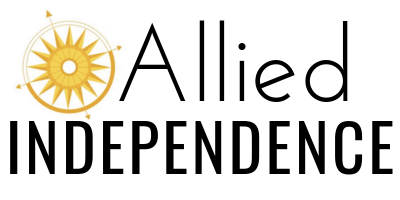IEP Fundamentals: What is Present Level of Academic Achievement and Functional Performance (PLAAFP)?
When creating an Individualized Education Plan (IEP), one of the most important sections is the Present Level of Academic Achievement and Functional Performance, also known as PLAAFP. This part provides a snapshot of where a student stands right now in their learning journey. It outlines their strengths, challenges, and what kind of services they need to move forward.
At the International Orientation and Mobility Online Symposium, Shannah Blankenship and Rebekka Berry shared valuable insights on crafting PLAAFPs, especially for students with visual impairments. Let’s break down what makes a great PLAAFP and how it can set students up for success!
Why is PLAAFP Important?
Think of the PLAAFP as the backbone of an IEP. It gives everyone, teachers, specialists, and families, a clear picture of a student's current abilities and needs. This helps in creating specific, measurable goals to support the student's growth.
For teachers of the visually impaired (TVIs) and Orientation and Mobility Specialists (O&Ms), writing a PLAAFP can be tricky. Many of the goals focus on functional skills like learning to move around independently, understanding one’s visual condition, or navigating the world, rather than traditional academic skills.
Challenges with Functional Goals
Functional goals are often different from what you’d expect in a regular classroom. O&Ms and TVIs face the challenge of focusing on the gaps caused by visual impairments. It’s important to:
Use data from evaluations (like a visual impairment assessment or O&M evaluation) to guide goal setting.
Avoid overwhelming the team with too many goals. Focus on 2-3 important goals at a time.
Make PLAAFPs Clear and Manageable
Shannah and Rebekka emphasized that simplicity is key when writing PLAAFPs. The goal is to be clear and to the point, not overly detailed or complicated. Here’s how you can do that:
Be Concise: Focus on summarizing the student’s strengths, challenges, and needs in a clear, easy-to-understand way.
Prioritize Needs: Rather than trying to address every single area, pick the most important ones that will make the biggest impact on the student’s progress.
Collaborate: Work with families, teachers, and other specialists to make sure everyone understands the student’s needs and how to best support them.
Tips for TVIs and O&Ms
Shannah and Rebekka also shared some practical tips for professionals working with students with visual impairments:
Build Relationships: Establishing trust with families and teachers is key. You don’t have to be alone in this—partnering with others in the classroom can help everyone stay on the same page.
It’s OK Not to Have All the Answers: Rebekka reminds us that it’s okay to admit when you don’t know something. Keep learning and ask for help when you need it.
Take It One Step at a Time: Rebekka also gave a great piece of advice: “Eat the elephant one bite at a time.” Focus on tackling one area at a time, whether that’s a specific skill, a PLAAFP, or another challenge, so you don’t feel overwhelmed.
Why This Matters Globally
Even though Shannah and Rebekka focused on Texas, the principles they shared can be applied anywhere. Students with visual impairments around the world face similar challenges, and the strategies they discussed can work in different regions, following local guidelines and requirements.
Wrapping It Up with A Step Forward
The PLAAFP is a vital part of the IEP process. By focusing on evaluation-based, functional goals, and working together with families and other professionals, TVIs and O&Ms can create a PLAAFP that makes a real difference. This approach ensures that students get the support they need to thrive—both academically and functionally.
Shannah’s advice is grounded in the importance of admitting when you don’t have all the answers. She recalled advice from a mentor:
“You’re not going to know every answer to every question. It’s okay to say, ‘I don’t know, but I’ll find out and get back to you.’” -Shannah Blankenship
This approach not only builds trust with families and colleagues but also fosters a culture of ongoing learning, where it’s more important to seek the correct answer than to pretend you know it all.
Rebekka’s advice is equally powerful:
“Eat the elephant one bite at a time.” -Rebekka Berry
Each year, Rebekka focused on mastering a specific area of her caseload, dedicating herself to learning everything she could about that topic. She encourages educators to approach their work with a focus on one area at a time. Over time, this method helps build expertise without feeling overwhelmed.
Both of these pieces of advice, embracing learning, admitting when you don’t know something, and tackling challenges step by step, are essential for personal growth and professional success in this field.
Topics: PLAAFP, IEP, visual impairments, teachers of the visually impaired, TVI, Orientation and Mobility Specialist, O&M, special education, IEP goals, functional goals, Expanded Core Curriculum, educational strategies, visual impairment education, professional development, IEP success, teaching students with visual impairments, A Step Forward, International Orientation and Mobility Online Symposium, Allied Independence
